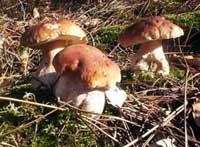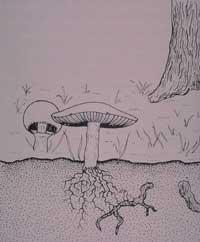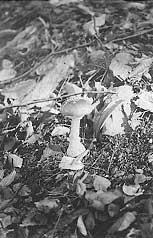The future of mushrooms
1997/01/01 Salcedo Larralde, Isabel Iturria: Elhuyar aldizkaria
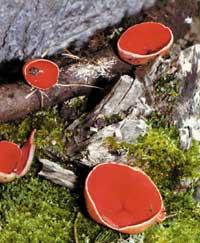
When talking about mushrooms we should differentiate two groups. On the one hand, we have mushroom researchers or, rather, fungi, who analyze every week these living beings that appear in the forests and meadows after registering all the corners of the Basque Country, and on the other hand, the mushrooms that devour the forests. If the work of the first group, and especially in Euskal Herria, has been meritorious with the preparations of the mycological weeks, the projections of conferences, etc., the behavior of the second group is worrisome, since they can endanger the future of fungi.
It is true that throughout history there have been different moments, and although in the beginning the human being was a collector, and what was collected was an essential food source, gradually had controlled resources of Nature and was losing all its dependence on Nature.
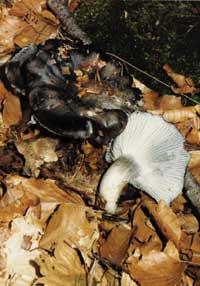
The current situation is very different, but is it not the old memories that lead us to look for mushrooms? When I say that the situation is different, I would like to emphasize, on the one hand, that it is not an essential power source and on the other, that the number of people in today's society is very high and that we are unbalancing the conditions of the environment, which would require a regulation of exploitation.
Mushroom diversity
Why should we not take advantage of the mushrooms offered by Nature? this is the question that comes to mind many and is not right. However, the other questions are related: why and how are fungi in one place? And we should also know these answers.
When explaining what mushrooms are, we would begin to describe some known and auditory ways. But would we say they are living beings? Do you know what this means? For they live and have their place, eat, live and reproduce, thus ensuring their life and the future of the species.
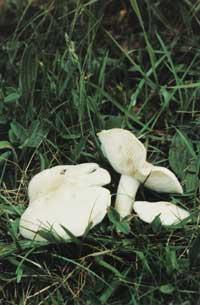
It can be said that after the historical process the fungi live in a variable balance with the rest of the living beings. Although formerly the fungi were classified with plants for their immobility, today they are applied a personality of their own. They differ from plants to obtain energy, that is, to keep them alive, because they are not able to perform photosynthesis and therefore need an organic source of carbon, that is, they are heterotrophs as animals, but they will feed on absorption. Thus, they live wherever there is organic matter.
The number of known fungi species is high, around one hundred thousand, and are divided into several groups based on the reproductive structure. However, all these species develop small invisible vegetative bodies: the mycelium (Figure 2). Generally this body is firm, that is, the hyfa, and it is the one that feeds. Fungi can grow where there are organic compounds, so they usually live in soil, trunks, etc. However, at a given time they develop reproductive bodies and in some groups this reigning body is visionary, which is what we know (Figures 2 and 3). To name these reproductive bodies are used various names, such as mushrooms, mushrooms, mushrooms, ardagai, bark, copitas, claws, etc...
The shape and size of these reproductive bodies is very variable, being useful for classification. In this article we will not enter into deep classifications, but we cannot forget that this section is very rich and interesting.
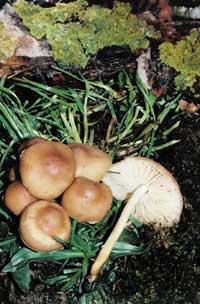
Each species of fungus has its own life cycle and can develop this reigning body, the carpophore, in spring, as the Sarcoscypha coccinea (Figure 1), the March marzuolus Hygrophorus (Figure 4) or the spring gambose Calocybe (Figure 5), which is the best condition for the development of Colugly6.
All this is empirically known, that is, by experience, and if summer and autumn are rainy and temperate, people expect to see mushrooms. Therefore, the time of the year, that is, the weather, is important, but you have to know where to go. To do this, we should be concerned about the ecology or lifestyle of fungi.
As mentioned above, fungi are dependent on the substrate and obtain food through: 1) taking advantage of the dead organic matter existing in the area, that is, the saprofites. These fungi are the first known ecologists in Nature, since they recycle most of the organic matter of the area, so that the rest of the living beings can take advantage of them; 2) taking advantage of the organic compound that has another living, which are called parasites and 3) when they come together with a living, obtaining the benefits of both, what is called symbiosis. The latter, very widespread in the world of fungi, is divided into two subsets, one known as lichens, which turn it into stem or natural body after the association, and the second, when the fungus joins the roots of flowering plants, mycorrhiza (Figure 3).
Forests do…
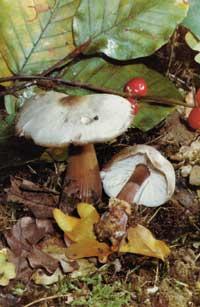
It is obvious that forests offer us adequate space to find the different groups of mushrooms mentioned. Thus, among the leaves, feeding on the present dead organic matter, we find numerous mushrooms such as Collybia, Mycena, etc. ; between the ears, but the mycelium of the fungi is closely linked to the roots of the trees, among which are numerous mushrooms appreciated by mushrooms such as Amanita, Boletus, Lactusleus, etc. And let's not say those who live from the back of trees, herbs or animals, that is, parasites, Armillariella, Microsphaera, etc. Finally, we can find fungi that develop a double personality and a visionary watchtower of their own, that is, lichens that live in the trunk, rock or forest land (Figure 3).
Therefore, it must be recognized that the search for mushrooms in the forest or scrub is the most appropriate; it is true that mushrooms can also be found in the meadows, the edible marasmius oreades (figure 9). Also known is the specificity of the trees of some fungi, so that the Lactarius deliciosus esnegorri only grows in the pine forests, while others are more extensive and can grow in different forests such as the Amanita rubescens lanperna roja.
Future
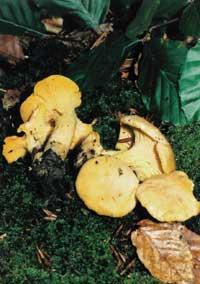
In short, we have seen how fungi live. In any case, the reproductive structures developed by the fungi take advantage of the offer of Nature for animals, including humans. That being so, where is the problem? The main problem is the inadequate exploitation of resources.
The problem of the general situation in Euskal Herria is based on two points, on the one hand, and due to local forest policy, the reduction of forests is evident and as a result the mycoflora is in danger of gradual or sudden extinction, according to the group, and on the other hand, over the last few years the number of harvesting mushrooms has increased considerably, which has caused the pressure received by the environment to be excessively high.
On the other hand, to properly identify mushrooms and avoid, among other things, the risk of poisoning, it is necessary to take them in their entirety, since some species are rings or volvients. However, it should be remembered that the body of most fungi, the mycelium, usually lives in the upper layer of the soil and when the soil defrost, the soil conditions change and the consequences can be very harmful to its microflora and microfauna.
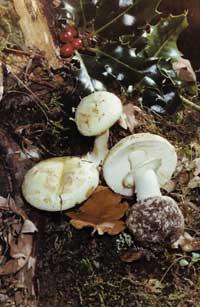
On the other hand, when collecting the reproductive bodies, they take the units of dispersion of the mushrooms, that is, the spores, so that from the forests the mushrooms disappear. If this event occurs only at a specific point, the overall situation would be sustainable, but if all corners of our environment bear the aforementioned pressure, ecosystems or media are not able to resist, endangering the loss of global diversity and, especially, fungal.
Faced with this situation, the rationalized collection of mushrooms must be promoted. Therefore, we understand the world of mushrooms and without making too deep a reflection, we realize that we must take care of Nature in the near future if we want to see mushrooms and other living beings.

Gai honi buruzko eduki gehiago
Elhuyarrek garatutako teknologia




